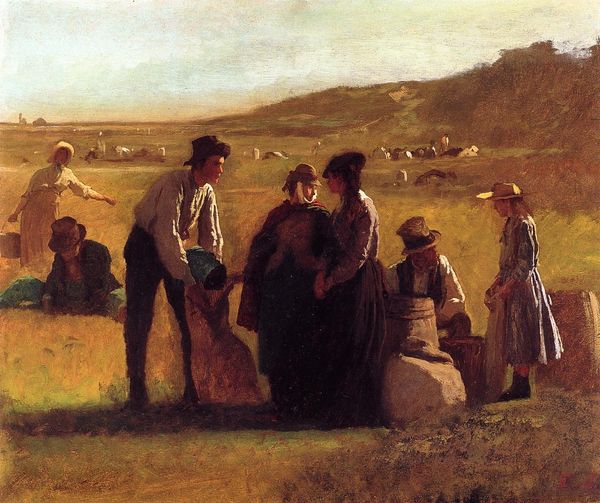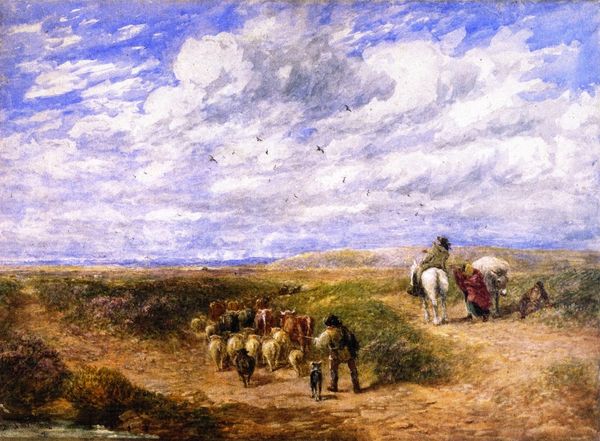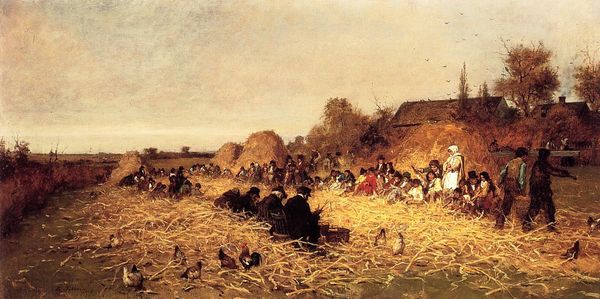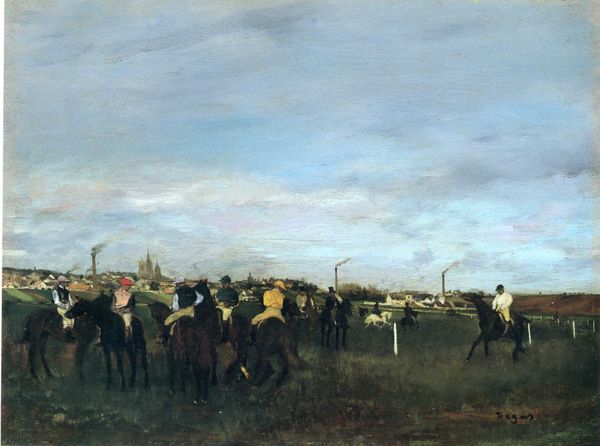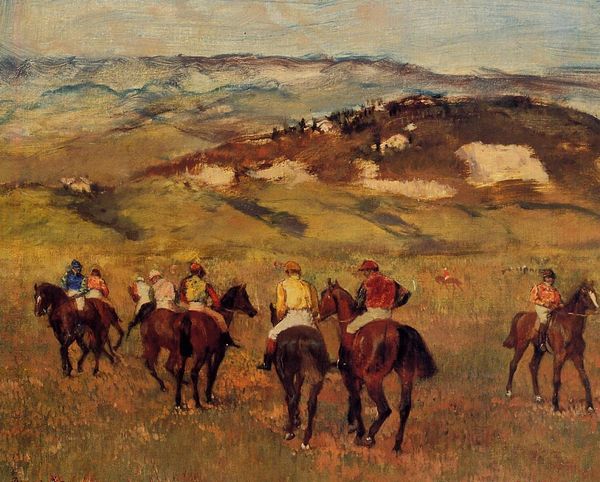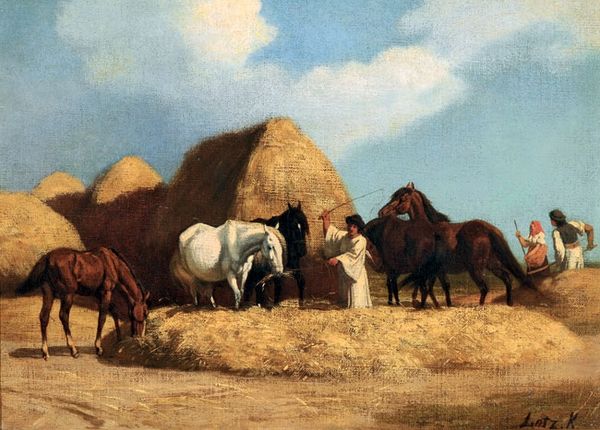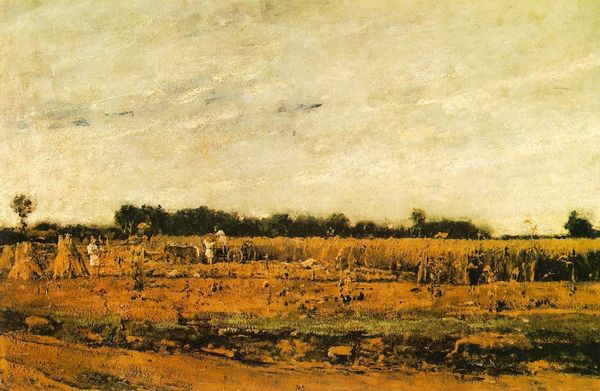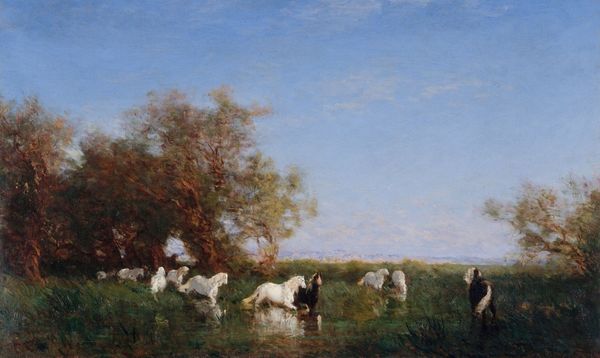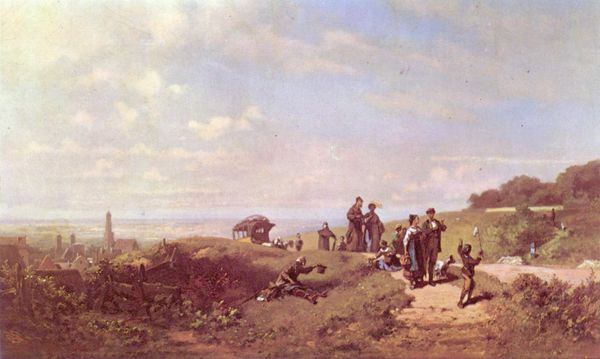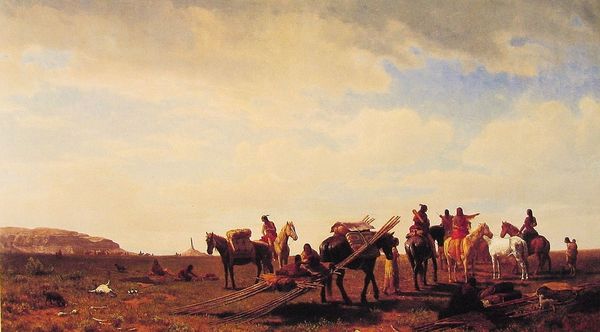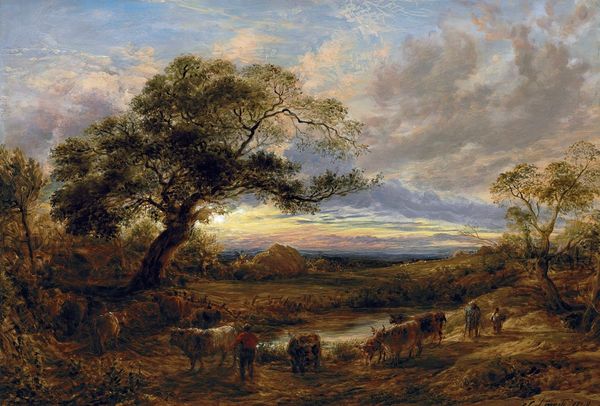
painting, plein-air, oil-paint
#
painting
#
impressionism
#
plein-air
#
oil-paint
#
landscape
#
impressionist landscape
#
oil painting
#
genre-painting
Copyright: Public domain
Editor: This is Eastman Johnson's "Study for 'The Cranberry Harvest, Island of Nantucket'," painted in 1879 using oil paints. It feels very grounded, depicting people working on the land. I’m curious, what strikes you most about this piece? Curator: It's a study, yet it captures something primal about labor and the land. Notice how the figures, bent at the harvest, become almost one with the earth. Consider the cranberry itself – its symbolic association with health, resilience, even blood. It's a fascinating convergence. What emotional resonance do you find in this image? Editor: It feels…strenuous, but also communal. There's a rhythm to the labor suggested, like a dance almost. Curator: Precisely! Johnson is capturing a particular cultural moment – the agrarian life on Nantucket before industrialization fully took hold. What do the clothes and grouping tell you? The shared work and intergenerational harmony evokes a strong, traditional symbol, though what you feel in those colors, those strokes, is critical too. Editor: So the cranberry harvest itself becomes a symbol, not just an activity? Curator: Absolutely. The image vibrates between capturing reality and shaping memory. A memory infused with hard work and shared identity that endures even after that way of life has passed. That harvest becomes a symbolic echo. Editor: I hadn’t thought of it that way, but seeing it as more than just a depiction of a harvest makes the piece so much more meaningful. Curator: Indeed. Images whisper secrets, provided we learn how to listen.
Comments
No comments
Be the first to comment and join the conversation on the ultimate creative platform.


